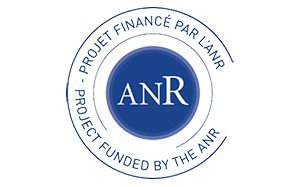Cloud Gaming/VR Study
Dataset Overview
Description:
Several datasets are hosted on this website. They all have been used in scientific publications.
Firstable, there are network captures (PCAP files), made under normal and disturbed network conditions. Then, we find CG captures (PCAP files) made via an emulated cellular network. The cellular traces used to generate these captures are also available. We also collect QoS and QoE KPIs data for CG. Finally, Wi-Fi KPIs data collected over Cloud VR data.Normal conditions:
As for the normal network conditions, we find network captures of CG traffic, as well as other application types, running under UDP.- Online Gaming
- Remote Desktop
- Visio Conference
- Video Streaming
- Live Video
- Facebook navigation
Disturbed conditions:
Here, we only have captures of CG traffic. We differentiate between two scenarios;- "Permanent": constraints start before the game session
- "Temporary": 2' normal conditions ; 2' disturbed conditions ; 2' normal conditions.
Cellular conditions:
Here, we also only have captures of CG traffic. There are 2 types of captures:- "In": means the captures are done before the MahiMahi Linkshell queue
- "Out": means the captures are done after the MahiMahi Linkshell queue
QoS and QoE:
In this section, we collect KPIs data related to QoS/QoE of CG sessions. These data were collected through WebRTC, under 6 different emulated 4G network conditions. There are csv files of 14 QoS/QoE features collected while playing racing game on three commercial CG platforms: (Dirt 4 for Google Stadia, TrackMania for NVIDIA GeForceNow and F1 2021 for Microsoft XCloud).Wi-Fi KPI data collected over Cloud Virtual Reality (Cloud VR):
In this section, we collect Wi-Fi KPIs data including metrics from physical layer and metrics from network layerwhile conducting experiments on Cloud VR applications using a testbed composed of NVIDIA CloudXR, Meta Quest 2 and Beat Saber on Stream VR. These metrics were directly collected from a proprietary Orange Livebox router.Publications:
- Assessing Unsupervised Machine Learning solutions for Anomaly Detection in Cloud Gaming Sessions, Ky et al. in Workshop on High-Precision, Predictable, and Low-Latency Networking (HiPNet 22), 2022.
- An Analysis of Cloud Gaming Platforms Behavior under Different Network Constraints , Marchal et al. in Journal of Network and Systems Management (JNSM), 2023.
- Efficient Identification of Cloud Gaming Traffic at the Edge, Graff et al. in IEEE/IFIP Network Operations and Management Symposium (NOMS 2023), 2023.
- A Hybrid P4/NFV Architecture for Cloud Gaming Traffic Detection with Unsupervised ML, Ky et al. in IEEE Symposium of Computers and Communications (ISCC 2023), 2023.
- ML Models for Detecting QoE Degradation in Low-Latency Applications: A Cloud-Gaming Case Study, Ky et al. in IEEE Transactions on Network and Service Management (TNSM), 2023.
- Segment Routing for Chaining Micro-Services at Different Programmable Network Levels, Mathieu et al. in 27th Conference on Innovation in Clouds, Internet and Networks (ICIN 2024), 2024.
- Improving Cloud Gaming traffic QoS: a comparison between class-based queuing policy and L4S, Graff et al. in Network Traffic Measurement and Analysis Conference (TMA 2024), 2024.
- CATS: Contrastive learning for Anomaly detection in Time Series, Ky et al. IEEE International Conference on Big Data (BigData 2024), 2024.
Acknowledgments:
These datasets are part of a project that has received funding from the French organization ANR. No ANR-19-CE25-0012.
Contact:
For more information, you can contact the authors of this work:
Thibault Cholez
thibault.cholez(at)loria.fr
Philippe Graff
philippe.graff(at)loria.fr
Xavier Marchal
xavier.marchal(at)loria.fr
Bertrand Mathieu
bertrand2.mathieu(at)orange.com
Joël Roman Ky
joel-roman.ky(at)loria.com

